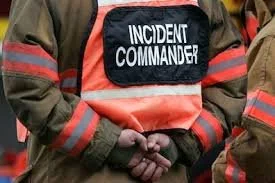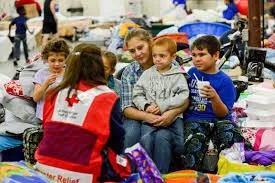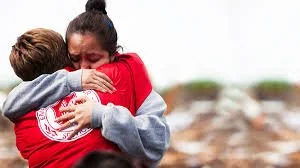Disaster Nursing for NCLEX Students and New Nurses
Brace yourself, it’s diaster nursing! And this time, it’s not a simulation.
At 3:47 AM on a Tuesday, the chemical plant on the east side of town exploded. By 4:15 AM, you’re staring at 47 casualties streaming into your emergency department – some walking, some on stretchers, some not moving at all. The air reeks of ammonia, several victims have chemical burns covering half their bodies, and a confused elderly man covered in white powder is asking you where his wife is. You have two other nurses, one ventilator, and about thirty seconds to decide who lives and who waits. Welcome to disaster nursing.
Let’s dive in!
First, understand that disasters fall into two main categories. Natural disasters include things like hurricanes, earthquakes, floods, and tornadoes. Then you have human-made disasters – think terrorist attacks, mass casualty events, chemical spills, or even something like a hospital fire. Both types require different responses, but the principles stay the same.
The key concept you need to master is triage. During a disaster, you won’t have enough resources to treat everyone the way you normally would, so you have to make tough decisions about who gets care first. The disaster triage system uses color coding that’s different from what you might see in a regular emergency department.
Triage colors and their meanings
Red tags go to patients who are critically injured but can be saved with immediate intervention. These are your priority patients. Yellow tags are for those who are injured but can wait for treatment without their condition deteriorating significantly. Green tags are the walking wounded – they need care but it’s not urgent. Black tags are the most difficult to deal with emotionally. These are patients who are either deceased or so critically injured that survival is unlikely even with treatment.
A nurse assessing patients for triage
Remember that in disaster triage, you’re making decisions based on doing the greatest good for the greatest number of people. It’s harsh, but it’s reality. You might have to walk past someone you could normally save to help three people who have a better chance of survival.
Emergency backup communication
Communication becomes absolutely critical during disasters. You need to know your facility’s emergency communication plan. This includes understanding the chain of command, knowing who reports to whom, and being familiar with backup communication systems when phones and computers fail. Many facilities use ham radios or satellite phones as backups.
Incident commander
Fifteen minutes into this nightmare, with victims still pouring in and your charge nurse having a panic attack in the supply closet, a woman in a hard hat with a clipboard walks up to you and says, “I’m the incident commander now, and you report to me.” Your first thought? “Who the hell are you?” But here’s the thing – that person with the clipboard is about to create order out of this chaos so you can actually save lives instead of running around like a chicken with its head cut off.
The incident command system is something you’ll definitely see on the NCLEX. This is the standardized approach to emergency management that coordinates response across different agencies and departments. As a nurse, you need to know where you fit in this system and who your supervisor is during an emergency.
A patient being instructed on how to decontaminate
Then you see him – a man stumbling through your doors, his skin literally smoking from chemical burns, screaming that he can’t see. Behind him are six more people covered in the same white powder that’s eating through their clothes. Your natural instinct? Run toward them and start helping. But take one step in their direction without proper decontamination, and you’ve just become victim number eight. Now instead of 47 patients, you’ve got 48, and one less nurse to help them.
Decontamination procedures are crucial, especially for chemical or biological incidents. You need to understand the difference between gross decontamination, which happens first and removes the majority of contaminants, and fine decontamination, which is more thorough. Always remember that decontamination happens before patients enter the treatment area, and you need proper personal protective equipment.
Levels of PPE
Speaking of PPE, know your levels. Level A is the highest protection with a fully encapsulated suit. Level B has supplied air but not a fully encapsulated suit. Level C uses air-purifying respirators, and Level D is your standard work uniform. Most nurses will work in Level C or D protection during disasters.
Evacuating patients
Evacuation procedures vary depending on whether you’re dealing with a horizontal evacuation, moving patients to another area on the same floor, or a vertical evacuation, moving patients to different floors or outside the building. Always evacuate ambulatory patients first, then wheelchair patients, then stretcher patients. Never use elevators during a fire, but they might be okay for other types of disasters.
Comforting a patient
Two hours into the chemical plant disaster, you’ve triaged the worst cases and the decontamination line is finally moving smoothly. That’s when you notice her – a young mother sitting in the corner, still covered in that white chemical powder, rocking back and forth and whispering “Where’s Emma? Where’s my Emma?” over and over. You check the patient log. No Emma listed. You check with registration. No Emma. Then it hits you – Emma might still be at the plant. Or worse. This woman isn’t just chemically burned, she’s psychologically shattered, and right now, she needs you to help hold her together while her world falls apart.
Here’s what they don’t teach you in nursing school – sometimes the most critical intervention you can provide isn’t IV fluids or oxygen. Sometimes it’s sitting with someone whose entire life just exploded and helping them remember how to breathe. Psychological first aid isn’t touchy-feely extra work you do when everything else is handled. During disasters, it’s as essential as decontamination, because a person who’s mentally falling apart can’t follow instructions, can’t help with their own care, and might hurt themselves or others. You’re not trying to be their therapist, but you might be the difference between someone who survives this disaster intact and someone who never recovers from it.
Kids in a disaster
Special populations need extra consideration. Pediatric patients, elderly patients, pregnant women, and people with disabilities all have unique needs during disasters. Children might not understand what’s happening and need simple, honest explanations. Elderly patients might have mobility issues or multiple medications that complicate evacuation. Pregnant women need positioning considerations and fetal monitoring if possible.
Documentation during disasters looks different from normal charting. You might be using disaster tags, simple paper forms, or even writing on the patient with a marker if that’s all you have. The key is to document enough information so the next person can continue care, but don’t spend time on detailed notes when lives are at stake.
Temporary beds during a disaster
Surge capacity planning means your facility needs to be ready to handle many more patients than normal. This might mean opening closed units, discharging stable patients early, or setting up treatment areas in hallways or parking lots. As a new nurse, you need to be flexible and ready to work outside your normal specialty area.
FAmily reunification during a disaster
Family reunification is often overlooked but incredibly important. Disasters separate families, and part of your role might involve helping people locate loved ones or providing information to family members looking for patients. Many facilities have specific protocols for this.
Remain calm, follow your training, and adapt to changing circumstances.
Finally, remember that disaster preparedness isn’t just about the big events you see on the news. It includes things like power outages, water main breaks, or even a mass food poisoning incident. The same principles apply regardless of the scale.
Your role as a nurse during disasters is to remain calm, follow your training, and adapt to changing circumstances. You’re going to see things that are difficult and make decisions that feel impossible. Trust your education, lean on your colleagues, and remember that you’re part of a team working to save lives under extraordinary circumstances.
The NCLEX will test your knowledge of these concepts through scenarios, so practice thinking through disaster situations and what your priorities would be. Remember the ABCs still apply – airway, breathing, circulation – but within the context of doing the most good for the most people.
You CAN do this!
💬 Join the Conversation:
Comment below!
Share your stories in the comments or reach out—I’d love to hear from you.
Do you know what your facility’s disaster preparedness procedures are?
Have you ever worked during a disaster?
Any tips or stories you'd like to share with your fellow new nurses?
Follow and Like!
💙If you are not on our email list, click the contact link here.
💙Don’t forget to follow me on my Instagram account @nclex_one_on_one_tutoring and share it with your colleagues!
Want Mentorship?
Nurse Mentor
If you’re a new nurse (or an experienced one) who wants help building communication skills, I’m here to support you.
Let’s imagine a nursing culture where we handle conflict with courage, professionalism, and care—not fear or silence.
Let’s build that together.



















